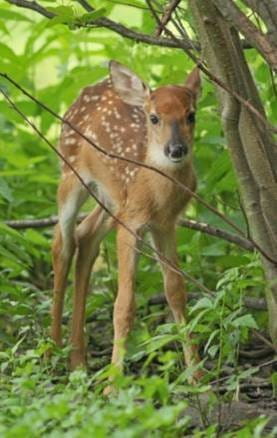Released on May 19, 2020
Spring is an exciting time for nature enthusiasts, when young animals such as ducklings, rabbits, songbirds or fawns can be viewed in their natural habitats. However, the Saskatchewan Ministry of Environment wants to emphasize a simple message to well-intentioned people who want to pick up and rescue what appear to be orphaned young animals: please don’t touch them.
In nature, young animals and birds are purposely placed into seclusion by their mothers to protect them from predators. In the majority of cases, these young animals are not abandoned or deserted, and the mother is nearby watching.
The chances for survival decrease when these young animals come into contact with humans. Wildlife can also carry and transmit infectious diseases to people, such as rabies or West Nile Virus.

Only wildlife rehabilitators are licensed to care for orphaned and injured animals. They are trained to make sure animals are given appropriate care and nutrition to help improve their chances of survival when they are released back into the wild.
A young animal should only be picked up if the parent is found dead nearby, or in an unnatural situation such as a young songbird found on a doorstep. In that case, the young bird could be moved to the closest suitable habitat.
To determine if a deer fawn is orphaned, please consider these signs:
- Has it been lying in the same position for more than 10 hours?
- Is it vocal?
- Is it covered in insects?
- Is it wet? Being covered by the morning dew may indicate it has been there for a prolonged period.
If there are obvious signs of injury, or evidence that it has been orphaned, please contact your local conservation officer before moving the fawn. The conservation officer will determine the best course of action for the animal.
People are also reminded to steer clear of adult wildlife, such as deer or moose that sometimes wander into urban areas. Large crowds will stress the animals, which could lead to a potentially dangerous situation.
Remember – give wildlife their space.
-30-
For more information, contact:
For public inquires, contact:
Environment
Regina
Phone: 1-800-567-4224
Email: centre.inquiry@gov.sk.ca
Jamie Gibson
Environment
Regina
Phone: 306-519-9290
Email: jamie.gibson@gov.sk.ca

